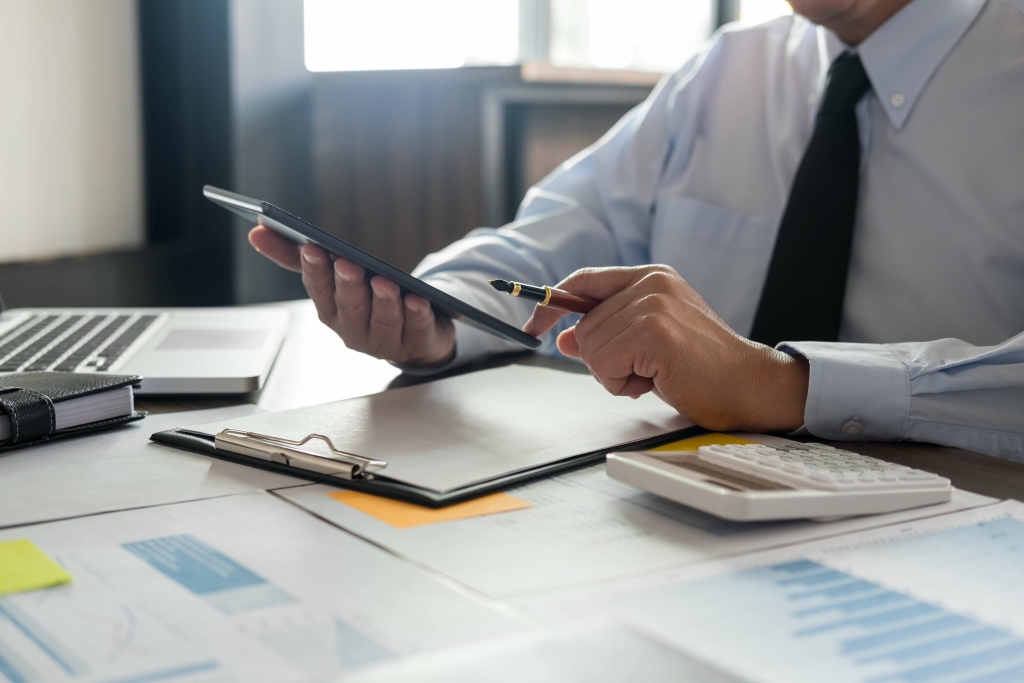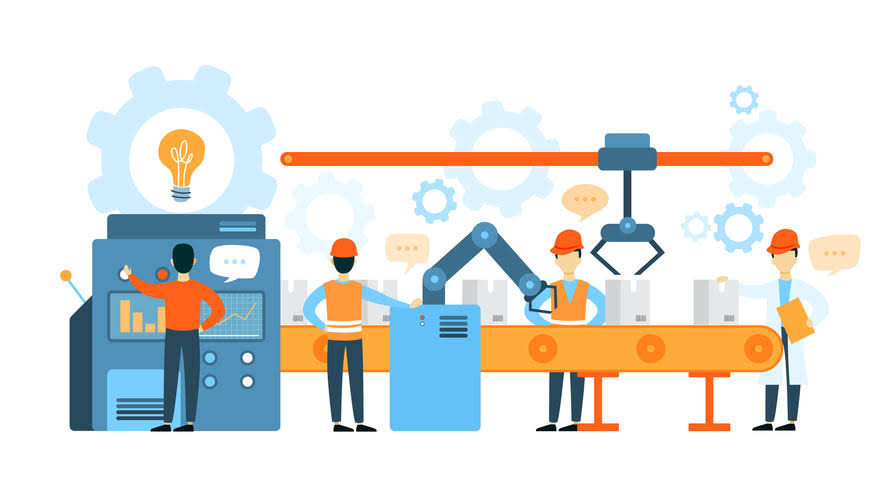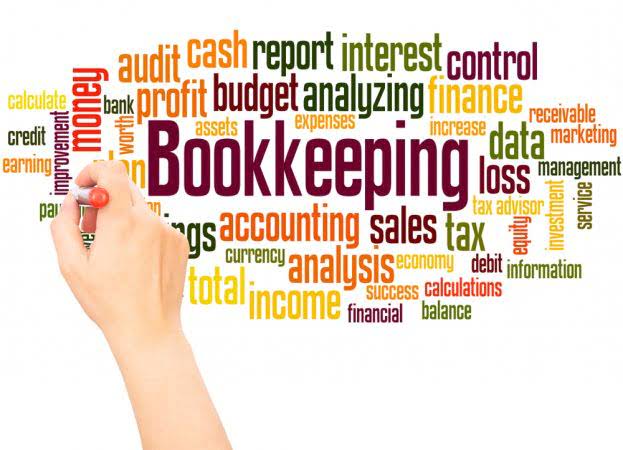Integra LifeSciences Reports Second Quarter 2024 Financial Results Integra LifeSciences Holdings Corporation
Negotiable
PRODUCT Description
New assets are typically more valuable than older ones for a number of reasons. Depreciation measures the value an asset loses over time—directly from ongoing use (through wear and tear) and indirectly from the introduction of new product models (plus factors such as inflation). Writing off only a portion of the cost each year, rather than all at once, also allows businesses to report higher net income in the year of purchase than they would otherwise. Total operating costs and expenses excludes stock compensation expense, depreciation and amortization and other operating (income) expenses, net. During the second quarter of 2024, Charter added 539,000 residential mobile lines, compared to growth of 628,000 during the second quarter of 2023.
- In contrast, depreciation pertains to tangible assets, offers several calculation methods, and considers salvage value.
- More typical presentations are to include accumulated amortization in the accumulated depreciation line item, or to present intangible assets net of accumulated amortization on a single line item.
- For example, vehicles, buildings, and equipment are tangible assets that you can depreciate.
- It used to be amortized over time but now must be reviewed annually for any potential adjustments.
- If expectations significantly change, the remaining carrying amount of the asset should be amortized over its revised remaining useful life.
- ABC Co. also determined the useful life of the intangible asset to be five years.
What is the Difference Between Amortization and Depreciation?
Amortization can refer to the process of paying off debt over time in regular installments of interest and principal sufficient to repay the loan in full by its maturity date. Salvage value can be based on past history of similar assets, a professional appraisal, or a percentage estimate of the value of the asset at the end of its useful life. Note that while salvage value is not used in declining balance calculations, once an asset has been depreciated down to its salvage value, it cannot be further depreciated. Upgrade/rebuild includes costs to modify or replace existing fiber/coaxial cable networks, including our network evolution initiative.
CoCounsel: The GenAI assistant for tax and accounting professionals
The first approach is required for all intangible assets, even though some can be expected not to lose value while others will lose value only irregularly. For example, a company often must often treat depreciation and amortization as non-cash transactions when preparing their statement of cash flow. Without this level of consideration, a company may find it more difficult to plan for capital expenditures that may require upfront capital. Tangible assets can often use the modified accelerated cost recovery system (MACRS). Meanwhile, amortization often does not use this practice, and the same amount of expense is recognized whether the intangible asset is older or newer. However, for some, these loan payments happen over a long period, meaning it’s a very slow and drawn-out process.
What are the different amortization methods?
- The straight-line method is the equal dispersion of monetary installments over each accounting period.
- This method divides the depreciable amount of the asset (cost minus residual value) evenly over its useful life.
- You record each payment as an expense, not the entire cost of the loan at once.
- In other words, it lets firms match expenses to the revenues they helped produce.
- Amortization helps businesses and investors understand and forecast their costs over time.
- The choice of method can significantly impact the depreciation expense and consequently the profits of a company.
The original office building may be a bit rundown but it still has value. The cost of the building, minus its resale value, is spread out over the predicted life of the building, with a portion of the cost being expensed in each accounting amortization refers to the allocation of the cost of assets to expense. year. Suppose a company purchases a patent for 50,000 with a useful life of 5 years. The company should not show it as a one-time charge; instead, it should spread the cost over its life and expense off by 10,000 per year.
Selecting an Allocation Method for Amortization
Some examples of fixed or tangible assets that are commonly depreciated include buildings, equipment, office furniture, vehicles, and machinery. An amortization schedule is often used to calculate a series of loan payments consisting of both principal and interest in each payment, as in the case of a mortgage. As a loan is an intangible item, amortization is the reduction in the carrying value of the balance. Amortization and depreciation are the two main methods of calculating the value of these assets, with the key difference between the two methods involving the type of asset being expensed.
- Its correct calculation and reporting are essential for presenting an accurate picture of a company’s financial health and aiding in informed decision-making.
- In both cases, however, the rationale for their treatment shall be directed towards the matching principle, thus properly aligning the expense against the revenues.
- Other expenses increased by $51 million, or 4.7% as compared to the second quarter of 2023, mostly driven by an insurance expense benefit in the year-ago quarter.
- The difference between amortization and depreciation is that depreciation is used on tangible assets.
- However, if the benefit from the asset decreases over time, or if it’s linked to production levels, alternative methods like the declining balance or units of production might be more appropriate.
- Moreover, amortization helps in reducing short-termism in financial reporting.
The expense amounts are then used as a tax deduction, reducing the tax liability of the business. Thus, you could gain a tax break for the entirety of the loan period, benefitting your business for numerous accounting periods. Furthermore, amortization enables your business to possess more income and assets on the balance sheet. However, like other assets, patents also lose their value over time as they can be obsolete, expire, etc.
Influence on a Company’s Financial Health and Performance Metrics
Amortization is important because it helps businesses and investors understand and forecast their costs over time. In the context of loan repayment, amortization schedules provide clarity concerning the portion of a loan payment that consists of interest versus the portion that is principal. This can be useful for purposes such as deducting interest payments on income tax forms.
Amortization Expense Journal Entry – Example, Definition, and Recording
What is an Amortization Expense?
- - 574
- ! Без
- ! Без рубрики
- !Fortune tige
- "fc Seoul Vs Jeju United Match Prediction & Betting Ideas With Live Odds - 490
- "mostbet Az-90 Kazino Azerbaycan Lap Yüksək Bukmeyker Rəsmi Sayt - 878
- "mostbet En Vivo: Haz Tus Pronósticos Sobre Directo Y Disfruta De Su Buffering" - 786
- +btoct
- +novPU
- 1
- 1win
- 1Win AZ Casino
- 1Win Brasil
- 1win Brazil
- 1WIN Casino Brasil
- 1win India
- 1WIN Official In Russia
- 1win Turkiye
- 1win uzbekistan
- 1winRussia
- 1wins-moldova.mdro-md x
- 1x-bet.downloa
- 1xbet egypt
- 1xbet Russian
- 1xbet3
- 1xbet32
- 1xbet4
- 1xbet51
- 1xbet52
- 1xbet61
- 1xbet62
- 1xbet82
- 2
- 2024te-Yeni-Üye-Olmanın-Avantajları-Deneme-Bonusu-Veren-Casinoslar.html
- 20Bet Deutschland
- 212
- 222
- 22bet Schweiz
- 26
- 2nd level
- 3
- 3dinvesting.com
- 4
- 5
- 5trucks.ru 500
- 6
- 7 slots
- 7slots
- 7к-казино
- 8
- 9
- a16z generative ai
- a16z generative ai 1
- acad
- Accessories
- adaptationfestival.gr
- adm
- adobe generative ai 1
- adobe generative ai 2
- afyonsosyetepazari.com 1
- AI Chatbot News
- AI News
- aliexpres.com.ua - офіційний сайт Аліекспрес в Україні
- alizeyeniufuklar.com
- almaradio.gr
- amminex.net 2
- amnistiepdm.org - Official Website of Safe Casino Sites in South Korea
- anbhoth.ie
- ankaratarotfali.com 2
- antalyaerenhali.com 1
- antalyaerenhali.com 2
- anushkatrivedi.comen-bd x2
- Apex-Clover-Link-Slot-Oyna---Kazançlı-Çevrimler.html
- archpoints.gr
- Artificial intelligence
- Artificial intelligence (AI)
- asian brides
- augustent.com 1
- Ausländische Online Casinos Schweiz – siehe offizielle Website fanarbeit.ch
- auto-info.hr 2
- aviator-game-official.netlify.app 1
- aviatorSITESI_may
- axiomaltd.ru 1500
- Bahigo Schweiz
- ballybunionartsfestival.ie bCasino
- bambturkiye.com 1
- BankOnBet
- bashpirat.ru 2000
- batery.org.in3
- BC.GAME Casino Schweiz
- bedava-slot-siteleri.com 1500
- bedava-slot.com 1500
- bedpage
- behar.hr 2
- belanok.mk
- best-news
- besyohocam.com 2
- bet10
- bet10 casino
- bet10-casino
- bet442casino.co.uk - UK
- Betmgm Bonus Code Nyp1500dm Grants A 20% Deposit Match Or $1, 500 Initial Bet For Broncos-saints 'thursday Night Football' - 862
- Betonred Casino Schweiz
- betspecial.co.uk 2
- Betting Company Mostbet App Online Sports Betting - 111
- bh_aug
- bh_sep
- bhnov
- bhoct
- BHS-Links
- BHTopJun
- Big-Bass-Bonanza-Blaze-Oyun-İncelemesi.html
- Big-Bass-Bonanza-İkili-Kazanma-Stratejileri-ve-İpuçları.html
- Bigger-Bass-Bonanza-Oyna-Ücretsiz---Slots-Oyunu.html
- bilimufku.com 2000
- biznisakademija.hr
- biznisakademija.hr 2
- Bizzo Casino – Offizielle Website in der Schweiz – editori-sesi.ch
- Bizzo Casino Schweiz
- black-seo-links
- Blog
- Blog Lk
- bonanzasitesi_may
- Bonus-Veren-Casino-Oyunları-En-İyi-Seçenekler.html
- Bookkeeping
- Bookmaker Şirkəti Mostbet: Formal Mobil Versiya Icmalı - 336
- bootstrap-3.rucss.php 900
- borka.org.mk
- braintreerec.com2
- brunch-cafe.ru
- BT_Prod_aug
- bt_sep
- btbtnov
- BTTopJun
- Buon Ma Thuot Itinerary: Explore Buon Ma Thuot in 1,2,3, and 4 Days - 115
- Buon Ma Thuot Itinerary: Explore Buon Ma Thuot in 1,2,3, and 4 Days - 534
- cam-girls
- camp-hockey.ru 500
- campionsbb.com 2000
- cashwin casino schweiz
- casino
- casino en ligne fr
- Casino Mostbet Mostbet Kaszinó Értékelés Nagy Nyeremények És Könnyű Kifizetések Mostbet - 733
- casino onlina ca
- casino online ar
- casinò online it
- Casino Oyunları Giris Yukle Bonuslar - 3
- casino-bet10
- Casino-Oyunlar-ve-Slot-Stratejileri-Şansınızı-Artırmanın-Yolları.html
- casinogermanyforpoland
- casinos
- Casinozer Avis +350 + Fondamental Libéralisation Spins Offert 100% Gratuit - 146
- catcasino-mix
- catcasino4
- cc-women-hellas-virtual-events.gr
- ccasino
- cdradvocacy.org
- centralrest.ru 500
- cerkezkoyisilanlari.com 1500
- CH
- Chathub
- Chatib
- chiorc.gr
- CHjun
- christofilopoulou.gr
- chytayemotut.com.ua
- CIB
- ciroblazevic.hr
- Cities
- City COCO
- content2
- Coolzino Casino Schweiz
- creativeworkingplayground.com
- creativeworkingplayground.com 1000
- Cryptocurrency exchange
- Cryptocurrency News
- czbrandss
- Dede-Casino-Kumar-Oyunu-Gates-of-Olympus-Slot-ile-Eğlenceyi-Zirveye-Taşıyın.html
- Deneme-Bonusu-Veren-Siteler-Kazanç-Fırsatlarını-Keşfedin.html
- dirty-talk
- dkmarino.ru 2000
- dogakentkres.com 2
- drop sk, cz
- drugs
- dutchbikeshop.ie Casinoly
- EC
- Echat
- ecospace
- eda-52.ru 500
- edirectory.ie
- Education
- Efsane-Slot-Oyunlar-ve-En-İyi-Kazandırma-Zamanları.html
- Efsanevi-NetEnt-Slot-Oyunlarıyla-Heyecan-Dolu-Bir-Yolculuğa-Çıkın.html
- Efsanevi-Slotlar-Pragmatic-Play-İle-Şansınızı-Deneyin.html
- egt-casino
- EGT-Slot-Oyunları-Eğlence-Dolu-Bir-Dünyaya-Adım-Atın.html
- ekaterina-school.ru
- Electric Motorbike
- Electric Scooter
- Electric Golf Scooter
- Electric Motorcycle
- Electric Tricycle
- Fat Tire Motorcycles
- Mini Electric Scooter
- elena-kapustina.ru 500
- elysiondanismanlik.com 1000
- en-iyi-slotlar.com 1500
- en-kazanl-slot-oyunlar-66b19ona.net 1000
- epilepsi
- epilepsie
- epilessia
- eporner
- Essentiel Casino En Tracé Langue Super Essentiel Répertoire De Août 2024 - 446
- ethnicitycelebration.ie MyStake
- Exploring Mostbet App In India: A Thorough Guide - 788
- ən Yüksək Mastercard Kazino Azərbaycan 2024 ️ ən əla Mastercard Onlayn Kazinoları - 389
- Fairspin-casino
- fapello
- fast
- festivalaki.gr
- find a bride
- findpolice.ru 700
- FinTech
- fishingbaits.ru 2000
- Forex Trading
- free_spins_free
- fruitslotpaly.com
- Future Trends In Crypto Wallets: Whats Next For Ironwallet? By Investing Com Studios - 149
- g
- galernaya20.ru 600
- games
- gates-of-olympus-oyna-demo.com 1000
- gates-of-olympus-oynayanlar
- Gates-of-Olympus-Slot-Dede-Casinoda-Büyülü-Bir-Kumar-Deneyimi.html
- generacijanext.hr 2
- gennaiapaidia.gr
- genunlimited.mk
- geratalentos.pt
- gerbera.cc
- ggokpoker-ru.ru
- ggpoker-ru.ru
- girls-do-porn
- golden-bet-casino.fr - FR
- goteborgwok.se
- haciozkan.com 1000
- hashtagmafia.de
- HellSpin Casino Official Global Website
- heylink.memostbet-giris_may
- Homepage
- httpsbass-bet.eu.comhubonus - HU
- httpsbass-bet.eu.comhumobile - HU
- httpsbass-bet.eu.comhuslots - HU
- httpsbass-bet.eu.complbonus - PL
- httpsbass-bet.eu.complslots - PL
- httpsenergycasino.eu.comhulogin - HU
- httpsenergycasino.eu.complbonuses - PL
- httpsenergycasino.eu.compllogin - PL
- httpsposido-casino.eu.comes - ES
- httpsposido-casino.eu.comeslogin - ES
- httpsposido-casino.eu.comesmobile - ES
- httpsposido-casino.eu.comfr - FR
- httpsposido-casino.eu.comfrlogin - FR
- httpsposido-casino.eu.comfrmobile - FR
- httpsspinanga.eu.comesbonus - ES
- httpsspinanga.eu.comeslogin - ES
- httpsspinanga.eu.comitbonus - IT
- httpsspinanga.eu.comitlogin - IT
- httpswonaco.eu.comfrbonuses - FR
- httpswonaco.eu.comfrmobile - FR
- httpswonaco.eu.comhubonuses - HU
- httpswonaco.eu.comhumobile - HU
- IGAMING
- igry-nardy.ru
- ihnk.ru 700
- ikranalchik.ru 500
- infopot.ru 2500
- inquisitivereader.com z1
- inquisitivereader.comapp z2
- intellectplanet.ru 1500
- Interwetten Schweiz
- iOS-Mobil-Ödeme-Bahis-Siteleri-Rehberi-2024(2).html
- ireland2040.ie 1Bet
- irelandskillslive.ie Rolletto
- iskonstrukcije.hr
- istoriyaplanety.ru 500
- IT Education
- IT Vacancies
- IT Вакансії
- IT Образование
- IT Освіта
- italyanmutfagihaftasi.com 1
- ivermectina
- Ivermectine
- IviBet Schweiz
- Jeetcity casino schweiz
- jk-yagoda.com.ua
- Jogos E Bônus Do Casino Mostbet Pt - 328
- joomla-school.com
- july_bh
- july_bt
- july_rb
- kartonbardakci.net 1000
- kasyno
- Kasyno Online PL
- kazino-onlayn-reyting-luchshih.xyz 2
- kazino-onlayn-reyting.xyz 2
- keepaneye.mk
- kentt.xyz
- kgskouskosh3.ru 4000
- king johnnie
- klen
- konteynerimalatsatis.com 1000
- kromatografi2023.org 1
- kspb2
- kumar-siteleri(1)_1
- kuzeyyrentacar.com 1500
- latin dating
- Learn English Online Together With Native Level Teachers - 311
- legal-casino-siteleri_1_1
- lenovo-smart.ru 2000
- leramiss
- lightnovosti.ru 170
- list crawler orlando
- Listcrawler central jersey
- listcrawler corpus christi
- Listcrawler san diego
- Lotoclub
- lovepang.ie Malina
- luckhome.ru 2000
- luckyladycharm.hr
- machintech.ru
- machintech.ru 500
- magnosolv.hu x
- mail order bride
- mail order wife
- mais2 com
- maisondecharme.ru 1000
- manaki.mk
- marios-grosser-traum.de
- Marsbahissitesi_may
- max-millions.co.uk - UK
- melbet-app.pro2
- melbetapppk.com
- melbetapppk.comen-pk x2
- melbetcanada.org2
- Meritking-Rulet-ve-Sorumlu-Oyun-Dikkat-Edilmesi-Gerekenler.html
- Metefe-ile-Casino-Sitelerinde-Hızlı-Para-Çekme.html
- Mini Bike
- missionaguafria.com
- missionaguafria.com6
- mobil-slot.com 1500
- mobileporngames
- Monro-casino
- Moonwin Casino – Offizielle Seite in Deutschland
- Mosbet: Onlayn Kazino Və Idman Mərcləri - 232
- Mosbet: Onlayn Kazino Və Idman Mərcləri - 815
- Mostbet £5 Free Bet No Deposit Every Day Of The Cheltenham Festival - 178
- Mostbet Affiliate Program Online Bookmaker Mostbet Partners - 124
- Mostbet Affiliate Program Online Bookmaker Mostbet Partners - 773
- Mostbet Affiliate Program: Ultimate Guide For Success - 254
- Mostbet Agent App Download - 968
- Mostbet App Apk Bangladesh Download For Android 2023 - 869
- Mostbet App Download 2024 Free Online Update V6 53 - 875
- Mostbet App Download Apk For Android And Ios - 310
- Mostbet App Download For Android Apk And Ios 2023 - 545
- Mostbet App Download For Android Apk And Ios In Bangladesh - 627
- Mostbet App Download In Pakistan Mostbet Apk For Android - 830
- Mostbet App Download Is Your Gateway To Immersive Casino Gaming - 544
- Mostbet App Download Is Your Gateway To Immersive Casino Gaming 【中途採用ノウハウ】 リクルートエージェント - 886
- Mostbet AZ Casino
- Mostbet Az-90 Kazino Azerbaycan Daha əla Bukmeyker Rəsmi Say - 660
- Mostbet Az-90 Kazino Azerbaycan Lap əla Bukmeyker Formal Sayt วิปัสสนาภาวนาธรรมโมลี - 806
- Mostbet Azerbaycan Yukle Android Apk Və Ios App-d - 248
- Mostbet Bangladesh Application For Android And Ios - 763
- Mostbet Bangladesh Official Site Sports Betting And Casino Freebets And Freespins - 799
- Mostbet Bd Internet Affiliate Marketing For The Partners Études Romanes : Cahiers Numériques De La Jeune Recherche - 278
- Mostbet Betting Company And Casino In Egypt Play And Make Bets - 231
- Mostbet Bonus Code Acquire Up To $1, 000 Bonus Bets - 160
- Mostbet Bonus Code Postnews: Snag $200 In Bonus Bets Or Perhaps $1k Bet Insurance For Yankees-guardians Sport 3, All Sports - 170
- Mostbet Bonus Program Code Rotowire: Get $1000 Promo Cowboys-browns & More Nfl Odds - 138
- Mostbet Cash Earn Money With Mostbet Via Mobcash App - 598
- Mostbet Casino Almost All Inclusive Μπόνους Για Την Πρώτη Κατάθεση - 794
- Mostbet Casino Online ⭐ Register And Get Welcome Bonus Now - 120
- Mostbet Casino Online ⭐ Register And Get Welcome Bonus Now - 252
- Mostbet Casino: Best Slots 2024 App Login - 205
- Mostbet Casino: актуальные зеркала на сегодня, регистрация, вход, скачать Aarambh Corporate Pvt Ltd - 27
- Mostbet Cheltenham Festival 6th Horses Daily Problem Win Approximately £250k" - 315
- Mostbet Com Live-casino In Bangladesh: Real Casino Action Online! - 70
- mostbet Com Sports Betting On The App Store - 233
- Mostbet Ghana Review Totally Free Bets Up In Order To Ghs 200 Oct 2024 - 875
- Mostbet Giriş Mostbet Türkiye Güncel Giriş Adresi - 999
- Mostbet Kaszinó Online Hivatalos Oldal Mostbet Casino Hungary Nyerőgépek, Bónuszok, Bejelentkezés - 312
- Mostbet Login To Your Online Casino Personal Account In Bangladesh! - 432
- Mostbet Mobil Tətbiq: Azərbaycandan Olan Oyunçular ötrü Icmal 2023 - 639
- Mostbet Mobile App: Review For Players From Azerbaijan 2024 - 963
- Mostbet Nepal: Subscribe With The 46,000 Rs Welcome Bonus - 824
- Mostbet Online Casino And Betting Platform In Pakistan Mobile App - 684
- Mostbet Online Casino And Betting Platform In Pakistan Mobile App [newline]baixar O Mostbet App Para Android Apk E Ios Grátis - 591
- Mostbet Online Casino And Betting Platform In Pakistan Mobile App [newline]baixar O Mostbet App Para Android Apk E Ios Grátis - 811
- Mostbet Overview 2024 Can A Person Trust This Gambling App?" - 775
- Mostbet Pakistan: Official Sports Betting Site 125% Bonus Login - 743
- Mostbet Partners Affiliate Program Review 2023 Upto 60% Revshare - 811
- Mostbet Partners Reviews Read Customer Service Reviews Of Mostbetpartners - 231
- Mostbet Pennsylvania Casino Added Bonus Code Bookies: Get $500 Match Benefit + 100 Moves For October 18th - 922
- Mostbet Portugal Receba Um Bónus De Até 1400 Pln Na Mostbet Pt Hoje! - 357
- Mostbet Registration How You Can Sign Up & Log In" - 457
- mostbet tr
- Mostbet UZ Kirish
- Mostbet Uzbekistan Официальный Сайт Спортивных Ставок И Онлайн-казино Uz 2023 - 7
- Mostbet Wettunternehmen Und Online-casino In Deutschland - 710
- Mostbet-az 45 Azərbaycanda Bukmeker Və Kazino Reward 550+250f 金州資訊 - 821
- Mostbet-az90 ⭐️giriş Və Bonuslar - 174
- Mostbet-az90 Azərbaycandakı Şirkətin Icmalı - 541
- Mostbet-az91: İdman Mərcləri Və Gir วิศวกรรมสถานแห่งประเทศไทย ในพระบรมราชูปถัมภ์ - 699
- Mostbet: Seamless Gaming Awaits Access Login And Mobile Apps Here! - 100
- Mostbet: Unleash Your Winning Potential With The Best Online Bookmaker - 883
- Mottobet---Türkiyenin-En-İyi-Bahis-Sitesi.html
- MOVIEBLOG
- my-1xbet.com
- my-guitar.ru 500
- new
- News
- Nigeria" - 567
- Nine Casino Official Website
- normel-spb.ru 2500
- nppr.hr 2
- Official rating of licensed and safe online casinos in South Korea
- Official website 22Bet
- Official Website For Sports Betting With Bdt 25,000 Bonus - 718
- Official Website For Sports Betting With Bdt 25,000 Bonus - 746
- Official website of Online Casino Rating in South Korea
- Offizielle 1xbet-Website in der Schweiz
- Offizielle Bewertung ausländischer Online-Casinos in der Schweiz
- Offizielle Bruce Bet-Website in Deutschland
- Offizielle Casinia-Website
- Offizielle Roobet-Website in der Schweiz
- Offizielle Roobet-Website in Deutschland - roobetsportwetten.com
- Offizielle Website BC Game Casino in Schweiz - stadionrestaurant.ch
- Offizielle Website des Buchmachers Rabona in Deutschland - rabonaonline.de
- Offizielle Website des Kingmaker Casinos in der Schweiz
- Offizielle Website des Lemon Casinos in der Schweiz
- Offizielle Website des NV Casinos in der Schweiz
- Offizielle Website des Spinanga Casinos
- Offizielle Website des Sportaza Casino in der Schweiz - lateinturerie.ch
- Offizielle Website von 20Bet in der Schweiz
- Offizielle Website von Bahigo in der Schweiz
- Offizielle Website von Betonred in der Schweiz - betonredcasino.ch
- Offizielle Website von Nine Casino
- okggpoker.lol
- okonlineplay.live
- Omegle
- Omegle cc
- omegle.is
- ondr.pt
- onlayn-kazino-reyting.xyz 1
- onlifezone.com - 대한민국의 라이선스 카지노 사이트 평가를 제공하는 국가도박관리위원회(NGCC)의 공식 정부 웹사이트입니다
- Online Betting Best Wagering Site - 275
- online casino au
- Online Gambling And On The Web Casino Games - 956
- onlinecasinopolska
- onwinsitesi_may
- oooat.ru
- organismosathinas.gr
- ostvarisan.hr
- Oyun-Tutkunları-İçin-En-İyi-Yatırım-Artsız-Casino-Siteleri-Forumda-İpuçları.html
- p0kerdom.wiki
- Pablic
- paratissimaskopje.mk
- pauzazapregled.mk
- Paycell-ile-Casino-Oyunları-Oyna---Kolay-Yöntemler.html
- pbnov
- pboct
- PBTOPJun
- pereezd.pl.ua
- perfume-paris.ru 1000
- pin up casino
- Pin UP Casino AZ
- Pin Up Peru
- pin-up
- pinco
- pinup
- PinUP AZ Casino
- pistolo-casinò.it - IT
- pistolocasinò.it - IT
- planet9.hr 2
- play-7k.live
- play.google.comstoreappsdetailsid=com.pinco.nicotoss_Английский
- playpoker-ru.ru
- playzilla casino schweiz
- plinko
- Plus Grand Essentiel En Ligne Fondamental Bonus Jamais Dépôt Exclusif - 383
- poemsandcrimes.gr
- poker-doms.store
- poker.ok-play-poker.click
- poker.play-online-ok.store
- pokerdom-casino.digital
- pokerdom-cazino.ink
- pokerdom-kaz.store
- pokerdom2.guru
- pokerdom24kz.wiki
- pokerdomkaz.live
- pokerdomkazahstan.biz
- pokerplay-ru.ru
- pokervdom.info
- politklass.ru
- porndude
- porngames
- post
- Posts
- premium-cashback.ru 2500
- processed
- PU_aug
- pu_sep
- pu++
- punov
- pytube.io2
- r7-kasino8.site
- r7kazino.life
- Rabona Schweiz
- radio-krapina.hr
- Rating of licensed and safe casino sites in South Korea on the100bestfleets.com
- rboct
- redtube
- remont-casio.ru 500
- remont-iwc.ru 500
- resilientinvestment.orgcanadaonline-casinos z
- review
- reyting-kazino-onlayn.xyz 2
- reyting-luchshih-kazino-onlayn.xyz 2
- reyting-onlayn-kazino-evropy.xyz 2
- reyting-onlayn-kazino-po-vyplatam.xyz 1
- reyting-onlayn-kazino-rossii.xyz 2
- reyting-onlayn-kazino.xyz 2
- reyting-top-10-onlayn-kazino.xyz 2
- riobet5.xyz
- robocatkaszino.hu - HU
- RoksitesiJun
- Roobet Schweiz
- RTP-Slotlarda-Kazanç-Yüzdesini-Artırmanın-5-Yolu.html
- rybelsus
- Sahabet_may
- samsunservisi.com 1500
- sas
- sch11-krasnochervonniy.ru
- scotlandin.space2
- seanamoni.gr
- Şeker-Patlatma-Oyunu-Bahislerinde-Kazanmanın-Sırları.html
- selectorcasino.lol
- selektor5.xyz 600
- Sentyabr 2023 Vərəq 62 Təzə əhval Media - 774
- seo
- seo-links
- seokaya-in-telegram
- service-plus.fr z1
- service-plus.fr z2
- setembroavidainteira.pt
- sevinf.ru 2
- sexting
- sexy-girls
- SFC
- sinanspor.com 1500
- sistemarabuluculuk.com 1000
- sizzlinghotdeluxe.hr
- Skokka
- skonline
- skopjekreativa.mk
- slot-oyunları-demo.net 1000
- Slot-Oyunlarında-Riskleri-Azaltmanın-Yolları.html
- Slot-Oyunlarında-RTP-Oranı-Kayıplarınızı-En-Aza-İndirin.html
- Slot-Uçak-Oyunu-Aviatoru-Oynamanın-En-İyi-Taktikleri.html
- slottica
- smartline93.ru
- Sober living
- Software development
- sondakikaguncelhaber.com 2
- sourliboom.com
- South Korea Casino Site Recommendations - Kangwon Land Official Site - onlifezone.com
- spankbang
- spbunesco.ru 2000
- spellwin.pl - PL
- spinsy-casino.fi - FI
- spinsycasino-fr.com - FR
- spinsykasyno.pl - PL
- stake-casino-ru.ru
- Starlight-Princess-Pachi-Oyun-İncelemesi-ve-İpuçları.html
- steiko.ru 500
- stromectol
- Sugar-Rush-Slot-Pragmatic-Play-Oyun-İncelemesi(2).html
- svsdvsfg
- Sweet-Bonanza-Açığı-Var-mı-Gerçekler-ve-İpuçları(2).html
- Sweet-Bonanza-Oyununda-En-İyi-Kazandırma-Saatleri-Nelerdir.html
- Sweet-Bonanza-Satın-Alma-Özelliği-Açıklaması(2).html
- sweet-bonanza.best 2000
- Tablet
- tandemngo.gr
- tecrubekonusuyor.net 1000
- teleia.com.gr
- test
- The Best Bookmaker And Online Casino In Germany - 151
- The-Dog-House-Slot-İndir-Ücretsiz-Casino-Oyunu.html
- the-omegle
- thelongeststride com
- thenorthfacemontturkiye.com 2
- tipobet turkiye
- tkokaze.hr 2
- TOP New Zealand online casinos
- top-reyting-onlayn-kazino.xyz 2
- TORRENT
- tr
- Troubleshooting Login Issues About Mostbet - 42
- Türkiyenin-En-İyi-Kumar-Siteleri-2024-Listesi(1).html
- tut-boxing.ru 2000
- uaw-chrysler.com 2
- Uncategorized
- unique casino schweiz
- Unsere neue offizielle Bahigo-Website in der Schweiz - schweizbahigo.ch
- UsaSexGuide
- vavada
- vddsvds
- veshka-adm.ru 1500
- victorbout.ru 500
- VIDEOSTREAMING
- vodka-casino-bonuskod.ru
- voziodsrce.mk
- vulcn.pro 2000
- vulkan-casino
- vulkn.online 2000
- vulkn.xyz 2000
- vullkan-lapsha
- Wettigo Schweiz
- What Does The Stage Spread Mean? - 756
- wielosfer.pl
- Wild-West-Gold-Yasal-Site---Güvenli-Casino-Oyunları.html
- Winning-Strategies-How-to-Use-Demo-Slots-to-Your-Advantage.html
- xamou.gr
- xanax
- xn----7sb3aca9ahcif.xn--p1ai 1500
- xn--80aaaiarepjsfqo6ayv.xn--p1ai 500
- xn--90awgb.xn--p1ai 900
- xn--b1amash.xn--p1ai 2000
- xslot
- xvideos
- Yenilikçi-Slot-Casino-Oyunlar-Eğlencenin-En-Son-Halini-Keşfedin.html
- yk
- ysftesisat.com 2
- zenginsozluk.com
- zoomacasino
- казино
- Комета Казино
- Новости
- Новости Криптовалют
- Новый Актуальный Адрес Входа Для Mostbet Россия В 2023 Году - 918
- Скачать Mostbet на Андроид бесплатно приложение 1Вин на телефон БК 1 Вин - 245
- Скачать Приложение Mostbet Для Android Apk И Ios В 1 Клик 2023 - 260
- Скачать Приложение Mostbet Для Android Apk И Ios В 1 Клик 2023 - 81
- Финтех
- Форекс Брокеры
- Форекс Обучение
- Форекс партнерская программа
- ශ්රී ලංකාවේ Mostbet ඔන්ලයින් ඔට්ටු ඇල්ලීම: Mostbet සමඟ විශාල ජයග්රහණයක් ලබා ගන්න සහ ප්රසාද දීමනා ගන්න - 186
- 카지노사이트 순위 한국에서 가장 인기있는 온라인 도박 플랫폼
- 한국 안전 카지노 사이트 평가
- 한국 정부 승인 최고 안전 카지노 순위는 onlifezone.com 에서만 확인 가능합니다
- 한국에서 허가받고 안전한 온라인 카지노의 공식 등급 - onlifezone.com
+86-15150222860
3rd Floor, Building 1,No.88 Guoshan Street, Guoshan Village, ZhiyingTown, Yongkang City, Jinhua City, Zhejiang Province, China






